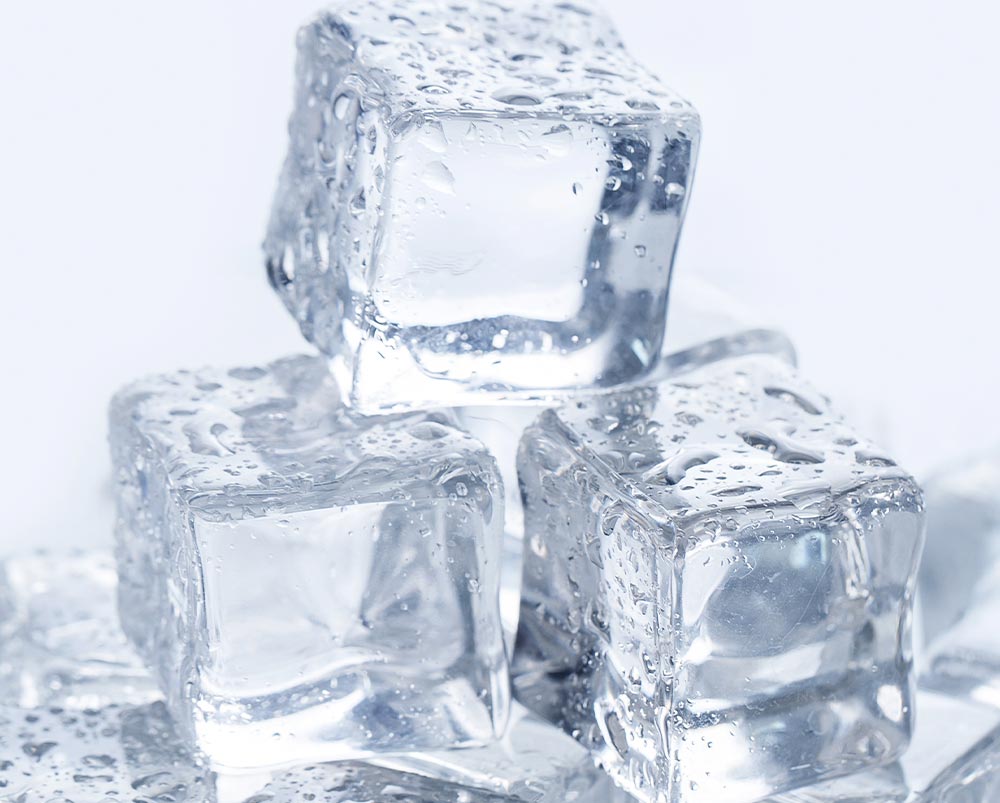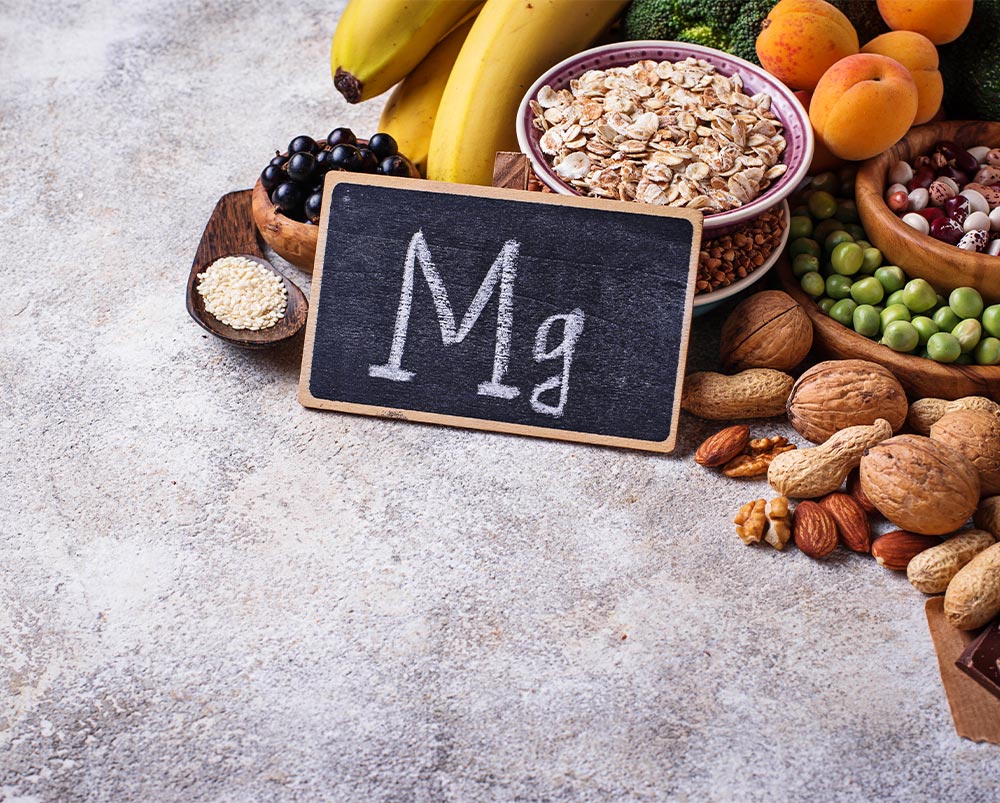Cold water therapy, also known as hydrotherapy or cold immersion therapy, is a popular practice that involves exposing the body to cold water therapy for various health benefits. While it may seem daunting at first, this therapy can have a range of positive effects on your physical and mental well-being. In this article, we will explore how cold water therapy works and its potential benefits for the mind and body. So grab a towel and get ready to take the plunge into our chilly blog!
What is cold water therapy immersion?
Cold water therapy is a technique that involves immersing the body in freezing water for various health benefits. It is also known as cold exposure or cold therapy. The idea behind this practice is that exposing the body to extremes can activate certain physiological responses. These responses can help to reduce inflammation, boost circulation, and improve overall health.
Cold water therapy can be done in several ways, such as taking a icy shower or bath, jumping into a chilly lake or open water and having a cold water swimming session, sitting in an ice tub, or using a cryotherapy chamber. Depending on the method used, the temperature of the water can vary from just above freezing to around 15C. The duration of the therapy can also vary, ranging from a few seconds to several minutes.

The History
Cold water therapy, also known as hydrotherapy, has been used for centuries by various cultures for its therapeutic benefits. The ancient Greeks, for instance, believed that chilling the body with icy water was a way to promote health and longevity.
The use of cold water therapy can be traced back to 2500 BCE in India where it was used as a form of medicine. In ancient Rome, people would go to public baths to enjoy the healing effects of chilly water on the body.
In modern times, the practice of cold water therapy gained popularity in Europe during the 19th century when Sebastian Kneipp, a German priest and naturopath, used it to treat various ailments. He believed that cold water therapy could stimulate the immune system, increase circulation, and relieve pain.
In the early 20th century, Dr. John Harvey Kellogg, a prominent American physician and nutritionist, also embraced the practice of hydrotherapy. He saw it as an effective way to detoxify the body and improve overall health.
Today, cold water therapy is widely practised across the world for its numerous benefits. It is believed to boost immunity, improve circulation, reduce inflammation, enhance mental clarity and focus, and even improve sleep. Professional athletes use it as a form of post-workout recovery, and some people incorporate it into their daily routine to promote overall well-being.

How it Works
When you immerse your body in cold water therapy, several physiological changes occur. At first, your skin and underlying tissues constrict, which helps to reduce blood flow to the outer layers of your skin. This process is called vasoconstriction and it helps to prevent heat loss from your body.
As your body continues to cool down, other responses occur. Your heart rate and blood pressure may increase, as your body tries to maintain sufficient blood flow to your vital organs. Your breathing may also become faster and shallower, as your body attempts to take in more oxygen.
As the icy water triggers a stress response in your body, it releases a surge of adrenaline and other hormones. These hormones can help to improve your mood, increase energy levels, and reduce inflammation throughout the body.
After exiting the chilly water, your body experiences a period of vasodilation, where the blood vessels in your skin and muscles widen again. This allows warm blood to flow back to the surface of your skin, which helps to increase circulation throughout your body. This process can help to reduce muscle soreness and promote tissue healing.
Overall, while cold water therapy may be uncomfortable at first, it can provide numerous health benefits for the body and mind. It is important to start slowly and gradually increase the exposure time to prevent hypothermia or other adverse effects.
What are the benefits of cold water therapy for wellness?
Cold water therapy can greatly improve mood, increase energy levels, reduce inflammation, and promote tissue healing. It also helps to increase circulation and reduce muscle soreness. But have a look into a more detailed explanation.

Boosts circulation and metabolism
Cold water therapy, also known as cold immersion therapy or cold hydrotherapy, refers to the practice of immersing the body in icy water for a brief period. This practice has been used for centuries to promote health and wellness, and one of its benefits is improved circulation.
When you immerse your body in chilly water, the blood vessels near your skin constrict, which reduces blood flow to the surface of your body. This is known as vasoconstriction. However, when you remove yourself from the icy water, your body begins to warm up again and the blood vessels near your skin dilate, which increases blood flow to the surface of your body. This is known as vasodilation.
The process of vasoconstriction and vasodilation has a pumping effect on your circulatory system, which can help improve blood flow throughout your body. This improved circulation can bring more oxygen and nutrients to your cells and tissues, while also helping to remove waste products.
In addition, cold water therapy can also activate the sympathetic nervous system, which is responsible for regulating many bodily functions, including circulation. This activation can increase heart rate and blood pressure, further improving circulation.
Reduces inflammation
When the body is exposed to cold water therapy, blood vessels constrict and then dilate when it warms up. This alternating constriction and dilation of blood vessels cause an increase in blood flow, which helps to flush out toxins and waste products from the affected area.
Cold water therapy also helps with pain relief by numbing the nerves and reducing swelling. It works by decreasing the production of inflammatory mediators such as cytokines, which are responsible for causing inflammation in the body. Cold water therapy is particularly effective in reducing inflammation in muscles and joints after intense workouts or injuries.
Also, cold water therapy has been shown to increase the production of endorphins, which are the body's natural painkillers. This further reduces pain and promotes healing in the affected area.

Improves immune system function
When our bodies are exposed to icy water, it triggers what is known as the "cold shock response" in our bodies. This response activates the sympathetic nervous system and releases the hormone norepinephrine. Norepinephrine acts as both a neurotransmitter and a hormone that plays a critical role in increasing immune system activity.
Cold water therapy also increases the production of white blood cells, which are responsible for fighting off infections and diseases. This is because when we are exposed to chilly water, our bodies respond by increasing the production of cytokines and other immune system proteins. These proteins help to activate the immune system and increase its ability to fight off harmful pathogens.
Elevates mood and energy levels
When the body is exposed to cold water therapy, it activates the sympathetic nervous system, which is responsible for the body's fight or flight response. This causes an increase in heart rate and breathing rate, which increases oxygen flow throughout the body. This results in increased alertness and a boost in energy levels.
Additionally, icy water causes the release of endorphins, which are natural mood-boosting chemicals in the brain. Endorphins help to reduce feelings of anxiety and depression and promote a sense of well-being. Cold water therapy also helps to reduce inflammation in the body, which can contribute to feelings of fatigue.

May aid in weight loss
The premise behind this technique is that when the body is exposed to icy temperatures, it activates mechanisms that increase metabolism, burn calories and promote fat loss.
One way in which cold water therapy aids in weight loss is by increasing the body’s metabolic rate. When the body is exposed to chilly temperatures, it activates a process called thermogenesis, which generates heat in order to maintain body temperature. This increased metabolic activity leads to an increase in calorie burning capacity of the body. In addition to increasing metabolism, cold water therapy also has a direct impact on the body’s fat stores. When the body is exposed to chilly temperatures, it activates brown fat cells, which are responsible for burning calories and generating heat. This process leads to a reduction in white fat, which is the type of fat that accumulates around the waistline and is associated with an increased risk of obesity-related diseases.
Another benefit of cold water therapy is that it can help to reduce inflammation in the body. Inflammation has been linked to a number of health problems including obesity and metabolic disorders. By decreasing inflammation, cold water therapy can reduce the risk of developing these health problems, thereby promoting weight loss.
Furthermore, cold water therapy can also help to improve circulation and boost the immune system. This is because exposure to icy temperatures triggers the release of endorphins, which are responsible for reducing pain and improving mood. By improving circulation and boosting the immune system, the body is better able to carry out its natural detoxification processes, which can lead to weight loss.
Are there any risks associated with cold hydrotherapy?
Hypothermia
While this practice is often touted for its potential benefits, such as reducing pain and improving muscle recovery, it can also pose a significant risk of hypothermia.
It occurs when the body loses heat faster than it can produce it, causing a dangerous drop in body temperature. When the body is submerged in icy water, heat loss occurs more rapidly due to the high thermal conductivity of water. This means that even a short period of exposure to icy water can lead to significant heat loss and increase the risk of hypothermia.
Additionally, people who practice cold water therapy may be more likely to underestimate the severity of their symptoms and continue to stay in the water longer than they should. Symptoms of hypothermia, such as shivering, confusion, and fatigue, can be difficult to detect when a person is already experiencing the intense sensations of cold water immersion.

Drowning or near-drowning incidents
Another risk associated with cold water therapy is the possibility of drowning or near-drowning incidents. This can occur if a person becomes disoriented or experiences muscle cramps while in icy water, making it difficult to perform open water swimming to safety. It's important to always practice cold water therapy under the supervision and in controlled environments, such as a swimming pool, to reduce the risk of these incidents.
Skin and nerve damage
Cold water therapy, also known as cryotherapy, is a popular practice where individuals expose their bodies to extremely icy temperatures for short periods of time with the aim of promoting various health benefits. However, it is important to note that exposing the skin to chilly water for prolonged periods of time can increase the risk of skin and nerve damage.
When the skin comes into contact with icy water, it causes vasoconstriction or narrowing of blood vessels in the area. This reduces blood flow to the area, which can lead to decreased oxygen supply and nutrient delivery to the tissues. This lack of circulation can cause damage to the skin cells and nerves, leading to tissue death or permanent nerve damage in severe cases.
Additionally, prolonged exposure to chilly water can cause a condition known as cold urticaria, which is characterized by itchy hives and swelling of the skin. This condition can be uncomfortable and even painful, and if left untreated, it can lead to further complications.
In conclusion, while cold water therapy may provide health benefits in short durations of exposure, it is important to avoid prolonged exposure to prevent the risk of skin and nerve damage.

How to try cold water therapy safely
Here are some ways to try cold water therapy safely:
1. Start Gradually: If you're new to cold water therapy, start slowly by gradually exposing yourself to cooler temperatures. For example, start by splashing your face with cool water before moving on to more challenging areas like your arms, legs, and chest.
2. Know Your Limits: Pay attention to how your body reacts during the process. Don't push yourself too hard if you start feeling uncomfortable or experience any pain or numbness.
3. Choose the Right Temperature: Ensure that the water temperature is not too icy for your body to handle. A good place to start would be with lukewarm water and gradually decrease the temperature as you get used to it.
4. Hydrate Yourself: It's important to stay hydrated before and after a cold water therapy session. Drink plenty of fluids to avoid dehydration.
5. Seek Medical Advice: If you have any medical conditions, consult with your doctor before trying cold water therapy. In some cases, this practice may not be suitable for individuals with certain health conditions, such as heart problems or low blood pressure.
6. Don't Overdo It: Avoid spending too much time in an ice bath or shower, especially if you're new to the practice. Start with shorter sessions and gradually increase the duration over time.
7. Dress Appropriately: Wear appropriate clothing when practising cold water therapy. This includes a swimsuit, wetsuit or clothes that are specifically designed for such exposure to keep your body warm and protect it from hypothermia.
By following these guidelines, you can safely try cold water therapy and experience its many benefits. Remember to always listen to your body and not push yourself beyond your limits. With patience and practice, you can develop a cold water therapy routine that works best for you. Stay safe and enjoy the rejuvenating effects of this practice!
Other types of cold water therapy

Alternating hot and icy showers
Alternating hot and chilly showers are a form of hydrotherapy that involves changing the water temperature from warm water to cold and back again. This practice is believed to have numerous health benefits, including improved circulation, reduced inflammation, stress relief, and increased energy.
To perform these showers, start with a warm shower for 3-5 minutes to open up your pores and increase blood flow. Then switch the water to chilly for 30 seconds to 1 minute. Repeat this cycle several times, ending with a cool or icy shower. It's important to gradually build up the time you spend in the cold water to avoid shock to your system.
The hot water opens up blood vessels, allowing for increased blood flow and oxygenation to muscles and tissues. The cold water then constricts these vessels, flushing out waste products and creating a pumping effect that further improves circulation.
Alternating hot and cold showers have been shown to reduce inflammation by decreasing levels of pro-inflammatory cytokines in the body. This makes them a useful tool for managing conditions like arthritis, sore muscles, and chronic pain.
In addition to physical benefits, alternating hot and cold showers can also have a positive impact on mental health. The sudden and intense change in temperature stimulates the release of endorphins, which are natural mood boosters. This combination of hot and cold temperatures also helps to reduce stress and improve overall energy levels.
Overall, incorporating alternating hot and cold showers into your self-care routine can provide a wide range of benefits for both your physical and mental health. So next time you hit the shower, consider turning up the heat and cooling off with some icy shower for a refreshing and rejuvenating experience.
Wim Hof Method
The Wim Hof Method is a breathing technique and cold exposure therapy developed by Wim Hof, also known as the "Iceman". The method is based on three principles: breathing, cold exposure, and meditation.
The first principle is breathing. The Wim Hof Method involves deep and rhythmic breathing that increases oxygen intake and reduces carbon dioxide levels in the body. This type of breathing can help improve circulation, reduce stress and anxiety, and boost energy levels.
The second principle is cold exposure. This involves exposing the body to cold temperatures, such as through ice bathing or cold showers. Cold exposure can help improve circulation, increase metabolism, and boost the immune system.
The third principle is meditation. The Wim Hof Method involves a form of meditation that focuses on mindfulness and visualization techniques to reduce stress and anxiety.
Together, these three principles can help improve physical and mental wellbeing. The Wim Hof Method has been shown to lower inflammation in the body, reduce symptoms of depression and anxiety, and help people better manage chronic pain. It is important to note that while the Wim Hof Method has many potential benefits, it should always be practised under supervision and with caution.

Current research on cold water therapy
In recent years, there has been growing interest in this form of therapy, and more scientific evidence with several research studies have been conducted to understand its impact on human health.
One area of research has focused on the benefits of whole bodycold-water immersion for athletic recovery. Studies have found that immersing oneself in such practice after exercise can reduce muscle soreness and inflammation, leading to faster recovery times and improved athletic performance.
Another area of research has explored the potential mental health benefits of cold water therapy. One study found that regular exposure to this therapy can increase the production of endorphins, which are natural mood boosters. This could lead to improved mental well-being and a reduction in symptoms of depression and anxiety.
Additionally, researchers have looked into the effects of cold water therapy on the immune system. One study found that regular icy immersion can increase levels of white blood cells, which are important for fighting off infections and diseases.
However, it is important to note that cold water therapy may not be suitable for everyone, particularly those with certain medical conditions. It is always best to consult with a primary care professional before starting any new form of therapy, including cold water therapy.
Frequently Asked Questions (FAQ):
What happens after 30 days of cold showers?
Taking a cold shower for 30 days can have many benefits for your physical and mental health. After 30 days, you may notice several positive changes in your body and mind.
Physically, cold showers can boost your immune system, promote better circulation, and improve your skin and hair health. You may also experience increased energy levels and improved muscle recovery after exercise.
Mentally, cold showers can help reduce stress and anxiety, increase mental alertness and focus, and improve your mood. It can also lead to better quality sleep as it helps regulate your core temperature and relaxes your muscles.
Also, after 30 days of cold showers, you may find yourself feeling more resilient and able to handle challenging situations with greater ease. This is because exposure to such practice has been shown to increase your body's production of hormones like adrenaline and noradrenaline, which can improve your ability to deal with stress.
Overall, taking cold showers for 30 days can be a great way to boost both your physical and mental health, leaving you feeling more energized, relaxed, and ready to take on whatever life throws your way.

When is the best time of day to do cold water therapy?
The best time of day to do cold plunge depends on your personal preferences and schedule. Some people prefer to do it in the morning because it helps to kickstart their day with increased energy and mental clarity. Others find that doing it at night can help them relax and sleep better.
If you're new to cold water therapy, it's a good idea to start with a shorter session in the morning or midday when your body temperature is naturally higher. This can help ease you into the practice and prevent shock to your system.
As you become more accustomed to cold water therapy, you can experiment with different times of day and find what works best for you. It's important to listen to your body and not push yourself too hard, especially if you have any underlying health conditions.
Overall, there is no one-size-fits-all answer to when the best time of day is for cold water therapy. It's important to find what works best for you and your schedule, as well as take into consideration your body's natural rhythms and any health concerns you may have. Remember to start with shorter sessions and gradually increase time and intensity as your body adapts to the practice. With consistent effort, you can reap the many benefits of cold water therapy at any time of day that suits you best.





Leave a comment (all fields required)